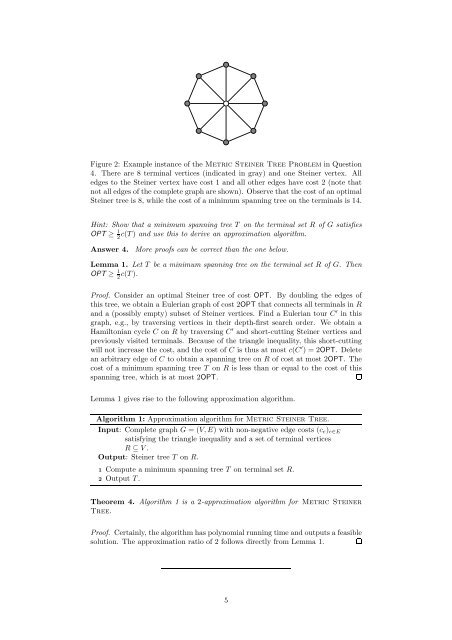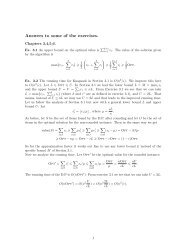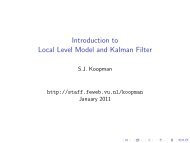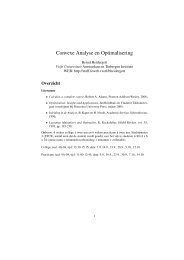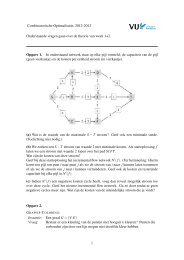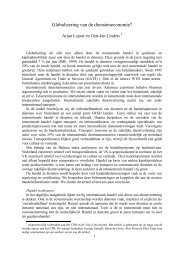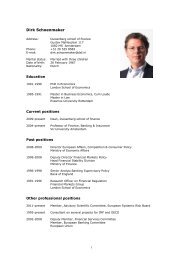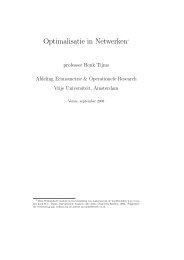You also want an ePaper? Increase the reach of your titles
YUMPU automatically turns print PDFs into web optimized ePapers that Google loves.
Figure 2: Example instance of <strong>the</strong> Metric Steiner Tree Problem in Question<br />
4. There are 8 terminal vertices (indicated in gray) and one Steiner vertex. All<br />
edges to <strong>the</strong> Steiner vertex have cost 1 and all o<strong>the</strong>r edges have cost 2 (note that<br />
not all edges of<strong>the</strong> complete graphare shown). Observethat <strong>the</strong> cost ofan optimal<br />
Steiner tree is 8, while <strong>the</strong> cost of a minimum spanning tree on <strong>the</strong> terminals is 14.<br />
Hint: Show that a minimum spanning tree T on <strong>the</strong> terminal set R of G satisfies<br />
OPT ≥ 1<br />
2c(T) and use this to derive an approximation algorithm.<br />
Answer 4. More proofs can be <strong>correct</strong> than <strong>the</strong> one below.<br />
Lemma 1. Let T be a minimum spanning tree on <strong>the</strong> terminal set R of G. Then<br />
OPT ≥ 1<br />
2 c(T).<br />
Proof. Consider an optimal Steiner tree of cost OPT. By doubling <strong>the</strong> edges of<br />
this tree, we obtain a Eulerian graph of cost 2OPT that connects all terminals in R<br />
and a (possibly empty) subset of Steiner vertices. Find a Eulerian tour C ′ in this<br />
graph, e.g., by traversing vertices in <strong>the</strong>ir depth-first search order. We obtain a<br />
Hamiltonian cycle C on R by traversing C ′ and short-cutting Steiner vertices and<br />
previously visited terminals. Because of <strong>the</strong> triangle inequality, this short-cutting<br />
will not increase <strong>the</strong> cost, and <strong>the</strong> cost of C is thus at most c(C ′ ) = 2OPT. Delete<br />
an arbitrary edge of C to obtain a spanning tree on R of cost at most 2OPT. The<br />
cost of a minimum spanning tree T on R is less than or equal to <strong>the</strong> cost of this<br />
spanning tree, which is at most 2OPT.<br />
Lemma 1 gives rise to <strong>the</strong> following approximation algorithm.<br />
Algorithm 1: Approximation algorithm for Metric Steiner Tree.<br />
Input: Complete graph G = (V,E) with non-negative edge costs (ce)e∈E<br />
satisfying <strong>the</strong> triangle inequality and a set of terminal vertices<br />
R ⊆ V.<br />
Output: Steiner tree T on R.<br />
1 Compute a minimum spanning tree T on terminal set R.<br />
2 Output T.<br />
Theorem 4. Algorithm 1 is a 2-approximation algorithm for Metric Steiner<br />
Tree.<br />
Proof. Certainly, <strong>the</strong> algorithmhas polynomialrunning time and outputs a feasible<br />
solution. The approximation ratio of 2 follows directly from Lemma 1.<br />
5


